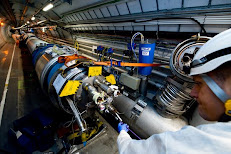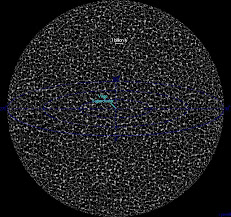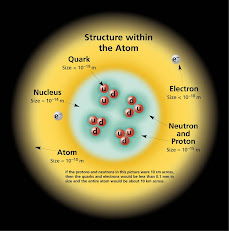Why
Vaccination Cannot be Mandatory
If you will sacrifice the few in order to save the many, then that
is immoral. Ask the few to volunteer and that would be fine! To coerce them
betrays the authority’s pledge to protect everyone under the law. Not even God,
who knows everything, coerces us. He gives us the choice through freewill.
You cannot ram even the most delicious food down the throat of
anyone.
But the vaccines are not at par with delicious food. Their safety
is not proven yet unlike that of the previous vaccines for example for measles,
polio and diphtheria. The FDA states in its article titled “Emergency Use for
Vaccines Explained”
An
Emergency Use Authorization (EUA) is a mechanism to facilitate the availability
and use of medical countermeasures, including vaccines, during public health
emergencies, such as the current COVID-19 pandemic. Under an EUA, FDA may allow
the use of unapproved medical products, or unapproved uses of approved medical
products in an emergency to diagnose, treat, or prevent serious or
life-threatening diseases or conditions when certain statutory criteria have
been met, including that there are no adequate, approved, and available
alternatives. Taking into consideration input from the FDA, manufacturers
decide whether and when to submit an EUA request to FDA.
Once
submitted, FDA will evaluate an EUA request and determine whether the relevant
statutory criteria are met, taking into account the totality of the scientific
evidence about the vaccine that is available to FDA.
Are the COVID-19 vaccines rigorously tested?
Yes.
Clinical trials are evaluating investigational COVID-19 vaccines in tens of
thousands of study participants to generate the scientific data and other
information needed by FDA to determine safety and effectiveness. These clinical
trials are being conducted according to the rigorous standards set forth by the
FDA.
Initially,
in phase 1, the vaccine is given to a small number of generally healthy people
to assess its safety at increasing doses and to gain early information about
how well the vaccine works to induce an immune response in people. In the
absence of safety concerns from phase 1 studies, phase 2 studies include more
people, where various dosages are tested on hundreds of people with typically
varying health statuses and from different demographic groups, in
randomized-controlled studies. These studies provide additional safety
information on common short-term side effects and risks, examine the
relationship between the dose administered and the immune response, and may
provide initial information regarding the effectiveness of the vaccine. In
phase 3, the vaccine is generally administered to thousands of people in
randomized, controlled studies involving broad demographic groups (i.e., the
population intended for use of the vaccine) and generates critical information
on effectiveness and additional important safety data. This phase provides
additional information about the immune response in people who receive the
vaccine compared to those who receive a control, such as a placebo.
What are the plans for continued monitoring of COVID-19
vaccines authorized by FDA for emergency use?
FDA
expects vaccine manufacturers to include in their EUA requests a plan for
active follow-up for safety, including deaths,
hospitalizations, and other serious or clinically significant adverse events,
among individuals who receive the vaccine under an EUA, to inform ongoing
benefit-risk determinations to support continuation of the EUA.
FDA
also expects manufacturers who receive an EUA to continue their clinical trials
to obtain additional safety and effectiveness information and pursue licensure
(approval).
Post-authorization
vaccine safety monitoring is a federal government responsibility shared
primarily by FDA and the U.S. Centers for Disease Control and Prevention (CDC),
along with other agencies involved in healthcare delivery. Post-authorization
safety monitoring during the COVID-19 pandemic vaccination program will aim to
continuously monitor the safety of COVID-19 vaccines to rapidly detect safety
problems if they exist. There will be multiple, complementary systems in place
with validated analytic methods that can rapidly detect signals for possible
vaccine safety problems. The U.S. government has a well-established post-authorization/post-approval
vaccine safety monitoring infrastructure that will be scaled up to meet the
needs of a large-scale COVID-19 vaccination program. The U.S. government – in
partnership with health systems, academic centers, and private sector partners
– will use multiple existing vaccine safety monitoring systems to monitor
COVID-19 vaccines in the post-authorization/approval period. Some of these
systems are the Vaccine Adverse Event Reporting System (VAERS), the Vaccine
Safety Datalink (VSD), the Biologics Effectiveness and Safety (BEST)
Initiative, and Medicare claims data.
How will vaccine recipients be informed about the benefits
and risks of any vaccine that receives an EUA?
FDA
must ensure that recipients of the vaccine under an EUA are informed, to the
extent practicable given the applicable circumstances, that FDA has authorized
the emergency use of the vaccine, of the known and potential benefits and
risks, the extent to which such benefits and risks are unknown, that they have the option to accept or refuse the
vaccine, and of any
available alternatives to the product. Typically, this information is
communicated in a patient “fact sheet.” The FDA posts these fact sheets on our
website. (Boldfacing and red font colorization supplied.)
(https://www.fda.gov/vaccines-blood-biologics/vaccines/emergency-use-authorization-vaccines-explained)
I lengthily quote the US FDA in order to avoid any wrong context.
There is also the false notion even among authorities that
vaccination protects other people around a vaccinated person. This was claimed
by CHED Chairman Prospero De Vera during a Zoom forum on October 1, 2021 from 9
am to 12 noon. I dare say this is wrong because according to medical science a
vaccine elicits a response from the immune system of the vaccinated, not the
persons surrounding him. Moreover, the vaccinated carries the virus with him.
Therefore he can transmit it to persons around him. The unvaccinated has the
same potential to infect others. It is down right wrong to think that only the
latter can spread the virus. No wonder, after the vaccines were rolled out the
daily increase in cases reached as high as 26,000 while it ranged between 5,000
and 10,000 before.
Another evidence that vaccines do not protect people around the
vaccinated is RA 11525 Section 12 one of whose paragraphs reads:
Individuals
vaccinated against Covid-19 as indicated in the vaccine card shall not be
considered immune from Covid-19, unless otherwise declared by the DOH based on
reliable scientific evidence and consensus.
When something is made mandatory, the mandating authority must
bear responsibility for any consequence. In RA 11525, such responsibility is
absent:
Section
8. – Notwithstanding any law to the contrary, public officials and employees,
contractors, manufacturers, volunteers, and representatives of duly authorized
private entities who are duly authorized to carry out and are actually carrying
out the COVID-19 Vaccination Program shall be immune from suit and liability
under Philippine laws with respect to all claims arising out of, related to, or
resulting from the administration or use of COVID-19 vaccines under the
COVID-19 Vaccination Program, except those arising from willful misconduct and
gross negligence.
I pause for a reply.
October 2, 2021






No comments:
Post a Comment